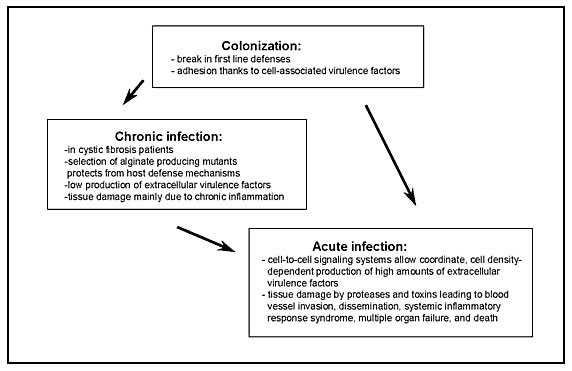Volume 4, Number 4—December 1998
Synopsis
Cell-to-Cell Signaling and Pseudomonas aeruginosa Infections
Figure 2

Figure 2. Model of the different phases of Pseudomonas aeruginosa infection. After an initial colonization phase, mostly dependent on cell-associated virulence factors, the infectious process evolves either to a chronic infection characterized by low production of extracellular virulence factors or to an acute infection characterized by high production of cell-to-cell signaling dependent virulence factors. During acute exacerbation of chronic infection, the production of cell-to-cell signaling dependent virulence factors is highly increased.
Page created: December 16, 2010
Page updated: December 16, 2010
Page reviewed: December 16, 2010
The conclusions, findings, and opinions expressed by authors contributing to this journal do not necessarily reflect the official position of the U.S. Department of Health and Human Services, the Public Health Service, the Centers for Disease Control and Prevention, or the authors' affiliated institutions. Use of trade names is for identification only and does not imply endorsement by any of the groups named above.